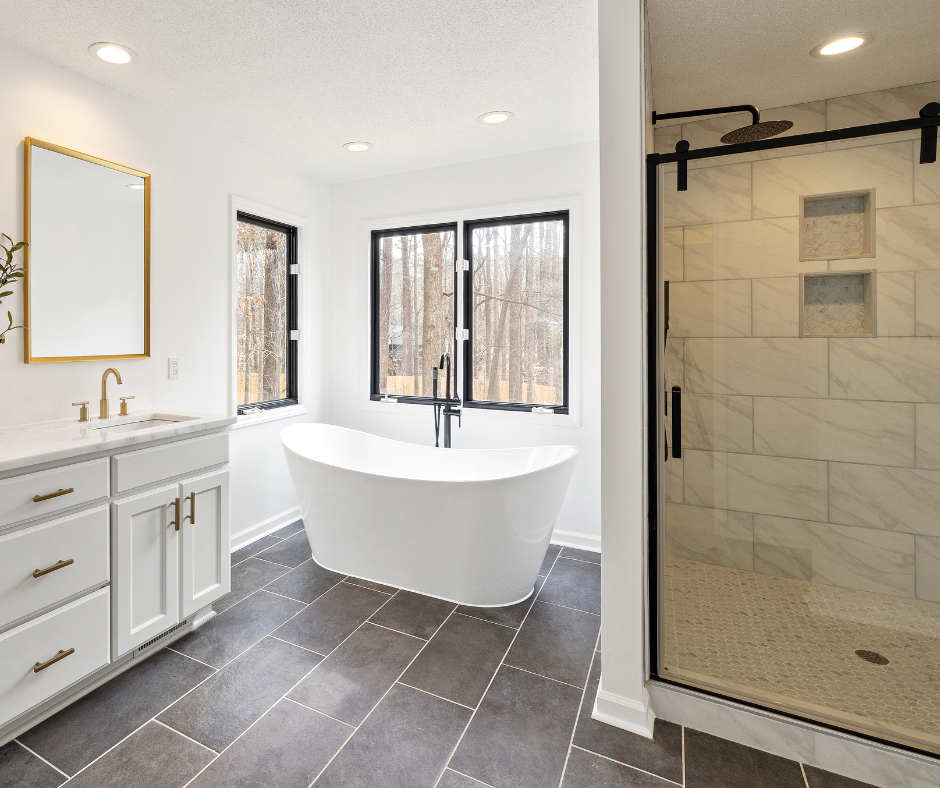
Stepping Up Your Comfort: Heated Floor Considerations
Share
The early morning chill of a New Jersey winter is a reality for every homeowner. While your furnace battles the cold, the one place that often remains stubbornly frigid is your bathroom or kitchen floor.
If you’re considering a remodel or new build, you’ve likely heard the term "heated tile floor," or "radiant floor heating." But what exactly does this luxurious amenity entail, how does it work, and is it truly worth the investment?
A heated tile floor is more than just a luxury; it’s a sophisticated, energy-efficient comfort system that turns one of the coldest surfaces in your home into a welcoming source of warmth.
The Mechanics of Warmth: How It Works
Heated tile floors operate on the principle of radiant heat, which is the same type of heat you feel from the sun or a campfire.
Unlike forced-air systems that blow hot air (which quickly rises to the ceiling), radiant heat warms objects and surfaces directly, offering a more consistent and comfortable warmth.
There are two primary systems for achieving a heated tile floor:
Electric Radiant Floor Heating
This is the most common and practical choice for residential tile installations.
The system uses a network of thin, durable heating cables or mats (often woven into a mesh) that are installed directly beneath the tile and thin-set mortar.
These cables are powered by electricity and connected to a dedicated circuit and a thermostat, allowing you to set a precise temperature and schedule.
Hydronic Radiant Floor Heating
This system uses heated water pumped through a loop of flexible, high-durability tubing installed under the floor.
While highly efficient for large areas or whole-house heating, it is more complex to install, often requiring a dedicated boiler or water heater setup.
For smaller spaces like a single bathroom, electric mats are generally preferred.
Installation: A Seamless Integration
The good news is that installing a heated floor is a relatively seamless process when done during a new tile installation. For electric systems, the process typically involves:
-
Subfloor Preparation: Ensuring a clean, level, and structurally sound surface.
-
Laying the Mat/Cable: The heating mat is rolled out or the cable is secured to the subfloor according to the manufacturer’s specifications. Crucially, the cable must never overlap, and its placement must be meticulously planned to avoid areas where fixtures (like a toilet or vanity) will be permanently installed.
-
Encapsulation: A layer of self-leveling cement or thin-set mortar is applied over the mat, embedding the cables and creating a perfectly flat surface for the tile.
-
Tiling: The chosen porcelain or ceramic tiles are then set on top of the embedded system, just as they would be in a standard installation.
The entire system is controlled by a dedicated smart thermostat, which can be programmed to ensure the floor is warm precisely when you need it—say, 15 minutes before your alarm goes off in the morning.
Beyond Comfort: The Hidden Benefits
While the immediate comfort is the main draw, heated tile floors offer several other compelling advantages:
-
Energy Efficiency: Radiant systems heat objects directly, requiring lower operating temperatures than forced-air systems. This localized, targeted heat can lower your overall heating bills.
-
Silent Operation: There are no noisy vents, fans, or motors involved. The heat is delivered in complete silence.
-
Hypoallergenic: Forced-air systems circulate dust, allergens, and dander. Radiant heat does not, contributing to better indoor air quality.
-
Faster Drying Time: In wet areas like bathrooms, the gentle, constant warmth helps evaporate moisture more quickly, inhibiting the growth of mold and mildew in grout lines.
The Tile Factor
Porcelain and ceramic tiles are the ideal floor coverings for radiant heat. They are dense materials with excellent thermal conductivity, meaning they heat up quickly and retain that warmth for a long time, maximizing the efficiency and comfort of the system.
If you’re ready to transform cold floors into a cozy haven, consult with flooring experts who can guide you on the best system for your space.
Ready to Feel the Difference? Visit Standard Tile With Stores Across New Jersey
Don't spend another winter morning enduring a cold floor. The team at Standard Tile can help you design and select the perfect tiles and radiant system to elevate your home's comfort.
Call or visit Standard Tile servicing all of New Jersey with 6 flooring stores in East Hanover, Edison, Jersey City, Succasunna, Totowa, and Watchung. Standard Tile is definitely not just another New Jersey tile shop.
We are an industry-leading tile retailer with tile stores across New Jersey. We’ve won three Best Of Houzz awards for service and design, and our tile selections will take the interior of your home to the next level.
We have 6 tile showrooms and offer kitchen tile, bathroom tile, porcelain tiles, and ceramic tiles for all of your home’s living areas. View our galleries here, and visit us at one of our showrooms today. We offer subway tile, stacked stone tile, and so many other styles that will bring your home or business's exterior or interiors to the next level.